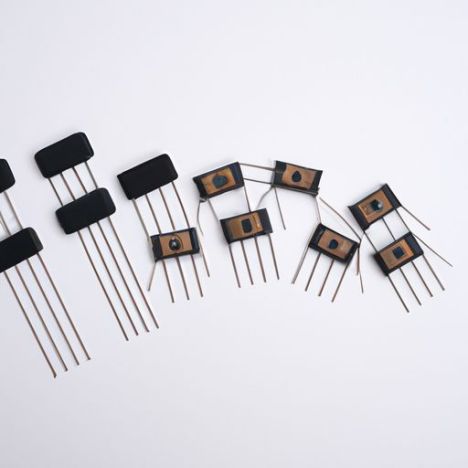Table of Contents
Understanding the Basics of Resistors in Electronic Circuits
Resistors are one of the most fundamental components in electronic circuits. They are passive two-terminal electrical components that resist the flow of current. In simple terms, resistors limit the amount of current that can flow through a circuit. This property is crucial in controlling the flow of electricity and ensuring that the circuit operates correctly.
There are various types of resistors available, each with its own specific characteristics and uses. The most common type is the fixed resistor, which has a set resistance value that does not change. Variable resistors, on the other hand, allow the resistance to be adjusted manually. This can be useful for controlling the brightness of a light or the volume of a speaker.
Resistors are typically made of materials such as carbon, metal, or metal Oxide. The resistance value of a resistor is measured in ohms (\u03a9), with higher resistance values indicating a greater restriction of current flow. Resistors are color-coded to indicate their resistance value, making it easy to identify them in a circuit.
In electronic circuits, resistors play a crucial role in voltage division, current limiting, and signal conditioning. They are often used to set the bias point of Transistors, protect components from excessive current, and control the gain of amplifiers. By carefully selecting the right resistor values, engineers can design circuits that perform specific functions with precision.
One important concept to understand when working with resistors is Ohm’s Law, which states that the current flowing through a resistor is directly proportional to the voltage across it and inversely proportional to the resistance. This relationship is expressed by the formula I = V/R, where I is the current in amperes, V is the voltage in volts, and R is the resistance in ohms.
When designing electronic circuits, it is essential to choose the right resistor values to ensure proper operation. Resistors can be connected in series or parallel to achieve the desired resistance value. Series connections add the resistance values together, while parallel connections reduce the overall resistance.

In addition to fixed and variable resistors, there are also specialized resistors such as Thermistors and photoresistors. Thermistors change resistance with temperature, making them useful for temperature sensing applications. Photoresistors, or light-dependent resistors, change resistance with light intensity, making them ideal for light sensing applications.
Overall, resistors are essential components in electronic circuits that help control the flow of current and ensure proper operation. By understanding the basics of resistors and how they are used in circuits, engineers and hobbyists can design and build electronic devices with precision and accuracy. Whether you are a beginner or an experienced electronics enthusiast, mastering the fundamentals of resistors is key to success in the world of electronics.
How Transistors and Diodes Play a Crucial Role in Sensor Technology
Transistors and diodes are essential components in sensor technology, playing a crucial role in the functionality and performance of various electronic devices. These semiconductor devices are used to control the flow of electrical current within a circuit, allowing Sensors to accurately detect and measure physical phenomena such as temperature, pressure, light, and motion.
Transistors are semiconductor devices that can amplify or switch electronic signals. They consist of three layers of semiconductor material \u2013 the emitter, base, and collector \u2013 and can be either bipolar junction transistors (BJTs) or field-effect transistors (FETs). In sensor technology, transistors are commonly used to amplify weak signals from sensors, allowing for more accurate measurements and improved signal-to-noise ratios.
Diodes, on the other hand, are semiconductor devices that allow current to flow in only one direction. They are often used in sensor circuits to protect sensitive components from reverse voltage and to rectify alternating current (AC) signals into direct current (DC). Diodes play a crucial role in ensuring the proper functioning of sensors by preventing damage from incorrect polarity or voltage spikes.
In sensor technology, transistors and diodes work together to amplify and process signals from sensors, enabling the accurate measurement and interpretation of physical phenomena. For example, in a temperature sensor circuit, a transistor may be used to amplify the small voltage change produced by a thermistor, while a diode may be used to rectify the signal before it is processed by a microcontroller or integrated circuit.
The integration of transistors and diodes into sensor circuits allows for greater sensitivity, accuracy, and reliability in measuring and monitoring various environmental parameters. By controlling the flow of electrical current and protecting sensitive components, these semiconductor devices play a crucial role in the performance of sensors across a wide range of applications.
Furthermore, transistors and diodes are often combined with Other Electronic Components such as resistors, Capacitors, and Integrated Circuits to create sensor modules that can be easily integrated into larger systems. These sensor modules are designed to provide a plug-and-play solution for measuring and monitoring specific parameters, making them ideal for applications in industrial automation, automotive systems, medical devices, and Consumer Electronics.
In conclusion, transistors and diodes are essential components in sensor technology, enabling the accurate measurement and interpretation of physical phenomena. By amplifying signals, controlling current flow, and protecting sensitive components, these semiconductor devices play a crucial role in the functionality and performance of sensors across a wide range of applications. As technology continues to advance, the integration of transistors and diodes into sensor circuits will continue to drive innovation and improve the capabilities of electronic devices in various industries.

